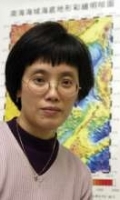Biological-Physical Interactions
Physical and biological processes in the sea interact in manifold ways, few of which are intuitively obvious to humans living in terrestrial environments. Insights derive from coordinated programs of modeling and measurement, through deliberate cycles of hypothesis generation and testing, often involving novel instrumentation, to replace human sensory capacities or extend them to marine settings. Several strong kinds of interactions have long been known. Plankton, for example, is defined by its inability to swim against prevailing horizontal currents, but important interactions can be more subtle. For example, planktonic organisms can greatly alter their horizontal trajectories by altering their vertical positions in the presence of vertical shear, providing a common means of both holoplanktonic and larval retention in coastal and estuarine environments. Among the many important phenomena affected by such interactions are the formation and alongshore propagation of harmful algal blooms. At a finer scale still, fluid motions influence the contact of gametes in external fertilization, chemosensory tactics, and even uptake of solutes by phytoplankton.
Participating Faculty
-

-

-

-

-

Heather Leslie, Ph.D.
Professor of Marine Sciences
207.563.8115
-

-

-

-

